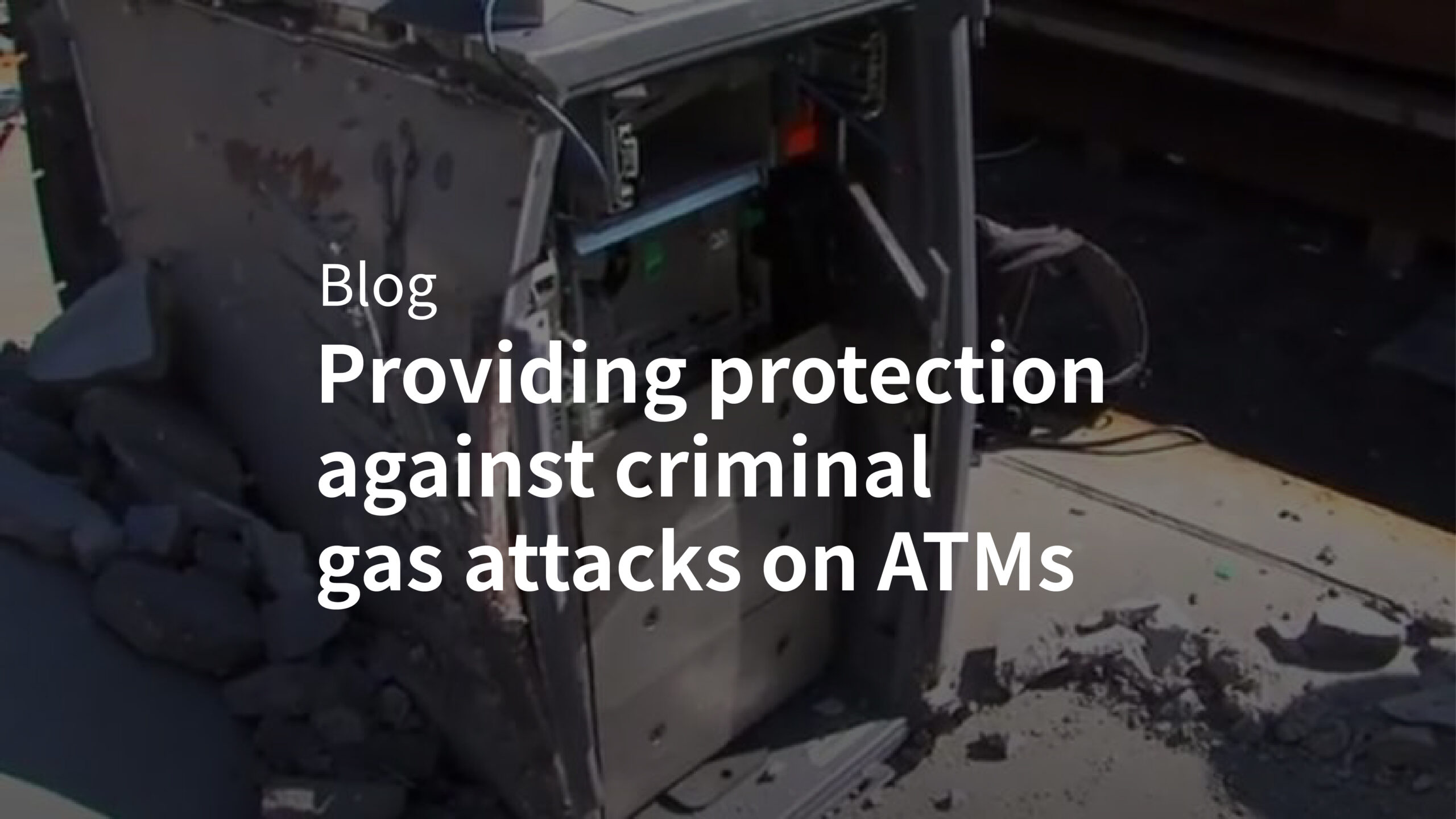
Explosive attacks on ATMs (Automated Teller Machines) happen on a daily basis in many countries. The criminals use an explosive gas (often a mixture of acetylene and oxygen) to access the cash cassettes in the ATM.
The Lockpoint Gryphon is the only ATM physical protection device to have been successfully tested to withstand such gas attacks.
Gexcon teamed with Lockpoint to provide theoretical testing on a worst-case scenario test programme where carefully monitored explosions were conducted. Using Gexcon’s laboratory site in Bergen, Norway, several tests were performed on an unprotected ATM compared to an ATM protected by Gryphon3 using an optimum acetylene mix and the results were staggering.
The unprotected ATM was completely destroyed and cash drawers rolled out of the ATM, the same test was repeated on the protected ATM and although the safe itself was largely destroyed, the device stood firm, leaving the cash secure.
These tests confirmed that the device could indeed protect against gas attacks, in fact, no criminal has yet succeeded in getting cash out of an ATM protected by a Gryphon in any gas attack to date.
DC Adrian Roberts of the West Midlands Organised Crime Unit and UK Representative to Interpol on ATM gas attacks, witnessed the testing of the ATMs, “I am really impressed. The machine protected the cash, which is obviously what the criminals are after, and hopefully, it will be a massive deterrent to them.”
To see what happened during the series of testing please watch the video below
To speak to one of our expert advisers, please visit our contact us page.
Do you like what you read?
Get the latest trends in the field of process safety management straight to your inbox, and enhance your skills through knowledge sharing from industry experts.


